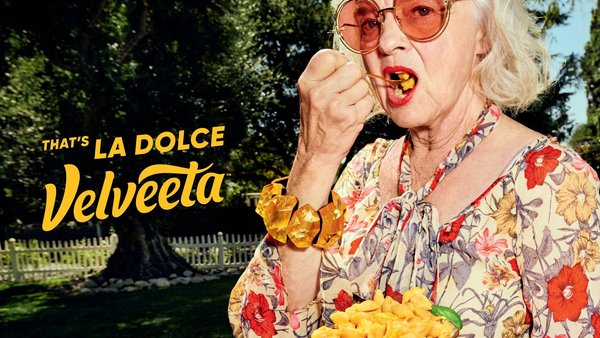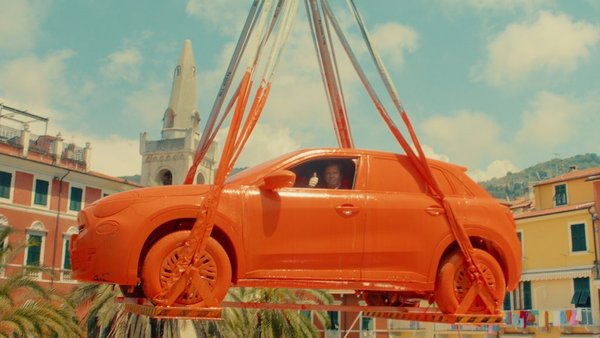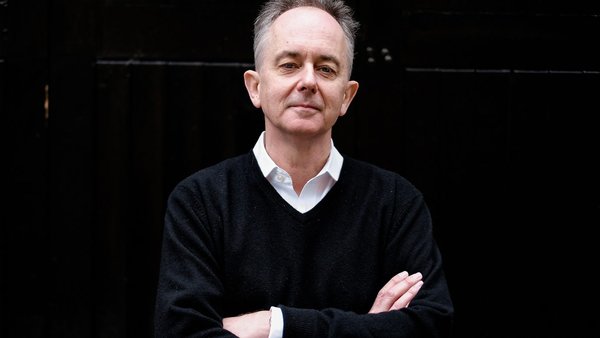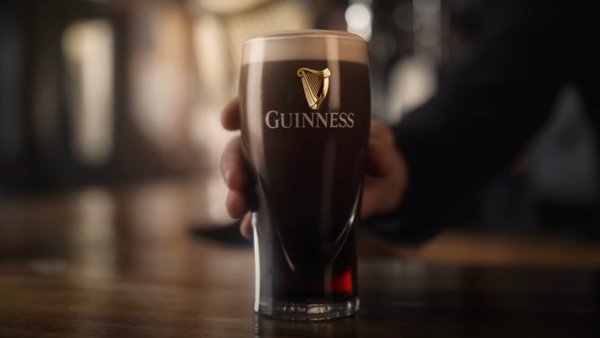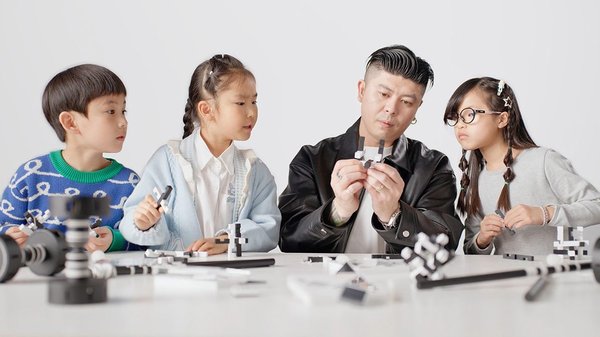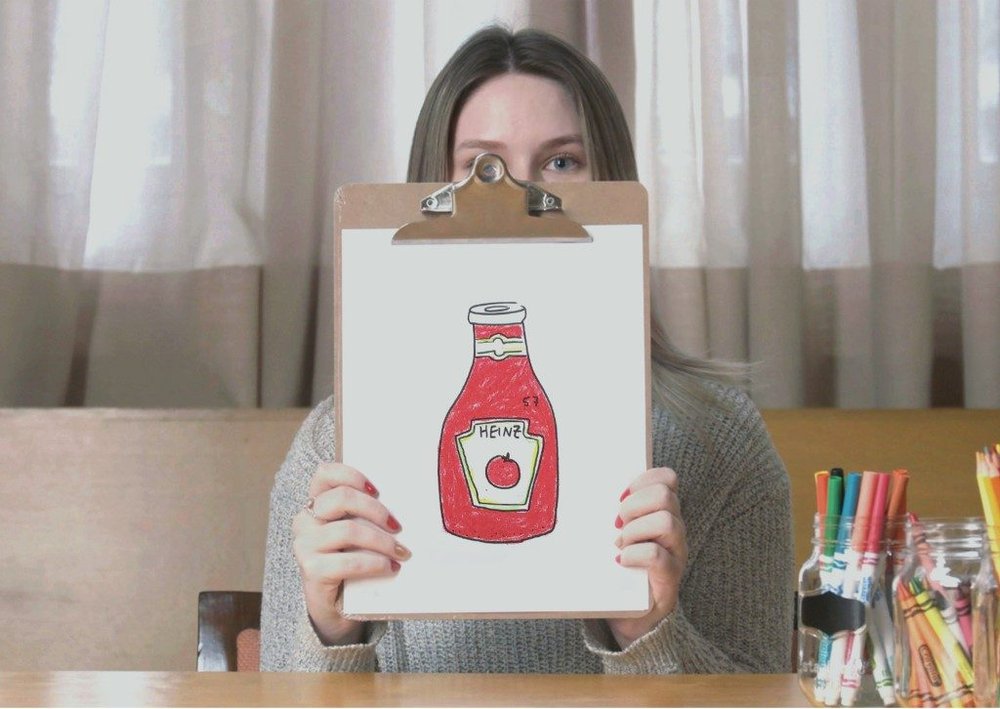
At a glance /
To keep a long-term positioning fresh:
- Get on the same page – make sure everyone on the team shares the same vision
- Leave breathing room – a strong platform is an adaptable, versatile one
- Evolve with culture – when the goalposts shift, adapt your position
- Be distinctive – own your positioning or cause to drive salience
- Listen carefully – align your brand with moments in culture
- Directly align your positioning with your business objectives – having a consistent and relevant positioning is good for business
- Stay committed – long-term consistency and transparency will pay off

Some of the world’s most iconic brands have been spinning the same yarn for decades. Heinz asserts its market leader position by continuously reminding us it’s the superior choice, Ikea champions affordable style, and Dove is a bastion of realistic beauty standards. Marmite’s ‘Love it or hate it’ has been around for so long in the UK that the brand name has been adopted into common parlance as an adjective for anything polarising.
But it’s not a copy-paste job. While repetition plays a role in drilling a message into audiences’ minds, the challenge is to be consistent without going stale. And in an industry that favours novelty, committing to and investing in one platform over a long period requires single-minded dedication.
If you can be consistent and take a long-term view, you’ll be handsomely rewarded. Creative consistency is key to marketing effectiveness, as evidenced by long-running, Gold IPA-winning brand platforms such as Cadbury’s ‘There’s a glass & a half in everyone’ and Guinness’ ‘Made of more’.
As Les Binet and Peter Field lay out in their research, long-term brand building creates mental structures that can be used to influence behaviour over the long term. ‘The whole point of brands is that they provide emotional shortcuts that enable people to make decisions more easily,’ Field told Contagious in 2021. These shortcuts mean brands like Marmite don’t have to waste any time contextualising their ads – everyone is aware of the premise and in on the joke.
In this guide to keeping a long-term positioning fresh, we identify what the world’s longest-running and most effective brand platforms have in common – and how they consistently communicate the same message without going stale.

The best long-term positionings or brand platforms directly service the business. When a brand’s positioning aligns with specific commercial objectives and isn’t just about brand building, the return on investment is easier to measure – and financial investment over time is easier to justify. For example, Bodyform’s work to educate people about menstruation has the secondary, commercial objective of encouraging people to seek out its period care products and growing its sales.
Pedigree / For the past 15 years, Pedigree has been working towards its goal of ending pet homelessness by 2050. Its mission to increase dog adoption is both a brand purpose and a business objective: more dogs in homes equals more potential customers for Pedigree. Showing current dog owners how passionate Pedigree is about dog adoption earns relevance and drives preference, while encouraging those in the market for a new dog to consider adoption by eliminating perceived barriers grows the number of potential customers.
Through campaigns such as The One True Loyalty Program and Love at First Sight (both initiatives to reimburse dog adoption fees) and Adoptable (using AI to create targeted, dynamic outdoor ads for local dogs up for adoption, driving a 6x increase in shelter site traffic) the brand has consistently found new ways to execute its strategy.
Promoting dog adoption has proved successful, not only improving favourability in an increasingly cluttered category, but boosting sales across Pedigree’s markets. And the clarity of the strategy has given Pedigree and its agencies creative freedom to consistently find fresh takes, Ahmad Salim, former ECD of Mars business and innovation at Colenso BBDO, told Contagious in 2020. ‘The brand very much sees itself as an activist brand that is on a mission to create a better world for dogs so it gives it that challenger, restless mindset,’ he said. ‘We’re constantly getting new briefs to solve a new issue [and] to reach new and interesting audiences with the adoption message.’
Ikea / Ikea’s mission ‘To create a better everyday life for the many people’ has been a part of the brand’s philosophy since its inception. It isn’t just a tagline – it guides the business, most obviously expressed in Ikea’s designs and its preternaturally low prices, which put its products within virtually anyone’s grasp.
It also informs the company’s communications. In the UK, the long-running Wonderful Everyday campaign (launched in 2014), promotes the idea that everyday life can be enhanced by Ikea products. Conceived by London agency Mother, the multiyear platform was designed to attract new shoppers and encourage more people to spend across more ranges, more often.
Championing the everyday has enabled Ikea to connect emotionally with customers by capturing the reality of modern life at home, and the campaign reversed a decline in sales, penetration and footfall, reestablishing Ikea as a market leader. According to the campaign’s 2018 IPA paper, penetration rose 10% and all Ikea product categories reported growth. The campaign generated an estimated £755m of incremental revenue and the ROMI was calculated at £2.31 for every £1 invested.

Between the dwindling average tenure of CMOs and the pressure to prove the value of marketing, long-term brand building is often neglected in favour of short-term results. Today’s most iconic brand platforms have held up in the face of competition, imitation or cultural shifts. Through years of consistent communications around a specific cause, a tagline, or a hero product, long-term positionings help brands carve out distinct spaces within their categories, protect their market share, and build deep-seated mental associations.
Bodyform / In October 2017 Bodyform became the first feminine hygiene brand to show real period blood in an advert. Since then, the brand has consistently challenged category norms, taken on taboos, and fought for change in attitudes toward women’s bodies. Inevitably, the success of subsequent campaigns such as Viva La Vulva (tackling taboos around female genitalia), Pain Stories (shining a light on the gender pain gap) and most recently, Never Just a Period (addressing education gaps and the reality of menstruation) have inspired competitors to mimic Bodyform’s work.
‘I see a lot of brands that hop on the female empowerment wagon because they hope to get something out of it without being committed to it in the long run,’ Martina Poulopati, global marketing and communications director at Essity, told Contagious in 2017. But Bodyform’s commitment is unwavering, she said. ‘Today’s consumers expect transparency and commitment – that takes a lot of persistence but can be extremely rewarding.’
Rather than change tack, Bodyform has continued to find new ways to represent women’s experiences truthfully and empathetically, whatever the issue. ‘It’s really important to maintain a commitment to the causes that we’ve already uncovered and the taboos that we’ve smashed to date,’ says AMV BBDO creative director, Lauren Peters. ‘It can’t just be a case of ticking a box one year and then moving on to something else.’
By investing in global research and committing to going deeper than any other brand, Bodyform’s platform remains distinctive and ownable, explains AMV BBDO strategy partner and head of brand Margaux Revol. ‘One element that you see in every single campaign is a sense of solidarity... What we are constantly trying to do, whatever story we’re telling, is make people realise they’re not the only ones experiencing something.’
Specsavers / Although Specsavers, the UK’s leading optician chain, has adapted and updated aspects of its brand platform over the years, its unwavering commitment to its famous tagline has made it one of the country’s most recognisable and popular brands. The optometry brand so effectively used humour to reflect on human error in its TV ads that the tagline, ‘Should’ve gone to Specsavers’, became part of everyday conversation. Two decades later, ‘Should’ve’ remains the brand’s most distinctive asset, but now it’s more often popping up in creative out-of-home stunts, reactive social campaigns, and used to tell warm and humorous stories that showcase Specsavers’ healthcare credentials.
Rather than launch a new platform, Specsavers found new ways to reconstruct existing memory structures around its brand. ‘You can supercharge those memories by doing something a little bit different,’ says Matthew Philip, head of strategy at MG OMD (Specsavers’ long-term media partner). ‘The problem most clients have is they interpret that as going “let’s try something entirely new”. Specsavers’ approach is absolutely what it should be, which is don’t change the strategy. The strategy is incredibly effective.’
Dove / The champion of realistic beauty standards, Dove, has diligently cultivated a positioning around celebrating ‘real beauty’ for the past 20 years. The Unilever-owned personal care brand broke with industry conventions when it featured real women in a 2004 poster campaign (which led to a 700% increase in sales for its creams and increased the brand’s share of the firming lotion market in the UK from 1% to 6%) – and it’s never looked back.
Its two-decades-strong Self Esteem Project has reached around 60 million lives and continues to inspire new work aimed at improving the self-worth and body image of women and girls. Rahul Titus, global head of influence at Ogilvy, says, ‘When you put the time and effort in with your audience, as slow as it may be, they buy into that journey.’

Enduring brand platforms evolve with the times and have enough breadth for the brand to shift and pivot as the cultural context changes. One great campaign won’t sustain you forever, and brands can’t afford to rest on their laurels; the strongest long-term positionings are constantly exploring new avenues and setting new targets that reflect the current climate. One way to ensure you stay rooted in reality is to base your work on real, current insights, gleaned from robust research.
KitKat / The confectionery brand introduced its ‘Have a Break, Have a KitKat’ tagline in 1957 and has found new ways to insert the sentiment into culture ever since. The Have a Break positioning connects the brand’s product to a positive, simple and universal action, as well as reflecting the way KitKat chocolate bars are broken apart to eat.
KitKat has adapted this positioning to suit different cultural contexts without straying from its core message: from creating a wifi-free zone to give people a break from the internet, to prompting an AI chatbot to ‘have a break’, KitKat’s commitment to and flexibility within its positioning has cemented its tagline in culture.
Barbie (Mattel) / Barbie turns 65 this year, a milestone reached by adapting its ‘limitless potential’ positioning to modern times. Just a decade ago, the brand was failing to connect with millennial mothers and saw sales decrease by 20% from 2012 to 2014 alone. But by reconnecting with its original purpose (to encourage girls to reach their limitless potential) and releasing a new, more representative range of dolls (today, Barbie comes in more than 175 variations: she has a prosthetic limb, vitiligo skin condition, and an over-the-ear hearing aid) in 2016 – the brand saved Barbie from obscurity and future-proofed her legacy. ‘By making the product line more reflective of the world the kids saw around them, we started to unlock a ton of fandom and created a really strong connection with our audience,’ Lisa McKnight, EVP and chief brand officer at Mattel, told Contagious last year.
Barbie’s renewed relevance in modern culture contributed to its successful foray onto the silver screen in 2023, adds McKnight. ‘The film would absolutely not have been the hit that it was today if we hadn’t done the foundational work we started 10 years ago,’ she argues. ‘Margot Robbie secured the rights to Barbie because she knew the brand was polarising and she was impressed by the evolution. [...] She would not have wanted to work on this project if Barbie wasn’t truly connected to culture.’
Dove / Over a 20-year period, Dove has consistently updated its mission and strategy to meet new issues – most notably, the rise of social media and the bias perpetuated by predictive artificial intelligence. Recognising the harmful impact of photo editing, toxic beauty trends, TikTok filters and the culture of comparison, Dove has turned the lens of Real Beauty onto the current most pressing issues facing women’s and girls’ mental health and self-esteem. ‘This is an ongoing strand of the Campaign for Real Beauty, but it’s against a modern set of issues,’ said Jo Bacon, former Ogilvy WPP global lead, of the 2023 Cost of Beauty campaign.
A strong sense of continuity ties together past campaigns like Evolution (2006), which revealed the amount of make-up and digital airbrushing applied to billboard models and recent work such as The Code, which highlights the narrow definitions of beauty generated by AI tools (and ends with Dove promising that it will never use AI to alter its imagery).
‘One of the things that we’re incredibly proud of is that we’ve kept the campaign evolving,’ said Bacon, of the 2023 #TurnYourBack campaign. ‘We spend a lot of time strategically thinking about where the campaign should go next. There are some reactive things that we’re doing, but everything is rooted in the same purpose. We’re constantly looking at new platforms, how women and girls are feeling and where the issues are expanding to.’

Take inspiration from your past to inform your future / Brands such as Ikea, Barbie and Specsavers have turned elements of their founding principles into successful long-term brand platforms. By revisiting familiar values and sentiments, brands can leverage the emotional shortcuts that influence purchase behaviour – as long as they continue to find fresh takes, says Caroline Riis, senior creative at Try, Oslo. ‘Ikea have had this in their blood for 70 years: the way they design products, the technicality of it, has always been there. You can choose to talk about anything, but it’s taking what they’ve always been about and finding new ways to talk about it. That’s crucial.’
Don’t be afraid to ‘remix’ distinctive assets, adds Mike Dubrick, chief creative officer, Rethink, Toronto – the agency behind successful Heinz Ketchup campaigns like Draw Ketchup and Ketchup Fraud. ‘By taking something that people think they know and presenting it in a way that feels unfamiliar, that unfamiliarity creates curiosity. If we then unlock that curiosity, it creates a really engaging, hopefully talkworthy piece of communication.’
Evolve with the times / Consistent doesn’t mean unflexible – any brand platform that has lasted decades has had to adapt to cultural and context shifts. In the case of Barbie, says Mattel’s Lisa McKnight, it’s about ‘progress but not perfection. We want to continue to push the brand, to make sure that the brand is always in lockstep with culture, and continuing to have more representation in its line,’ she says. ‘Enduring brands cannot stand still.’
There is creative freedom within consistency, adds Matthew Philip, head of strategy at MG OMD, referring to Specsavers’ famous tagline. ‘You never want to see Should’ve gone to Specsavers as a straitjacket. It should be this thing that powers the brand but enables us to do other things around it as well.’
